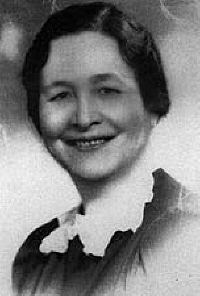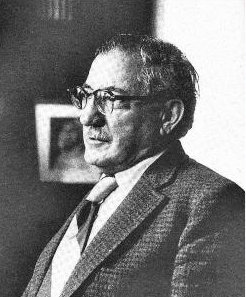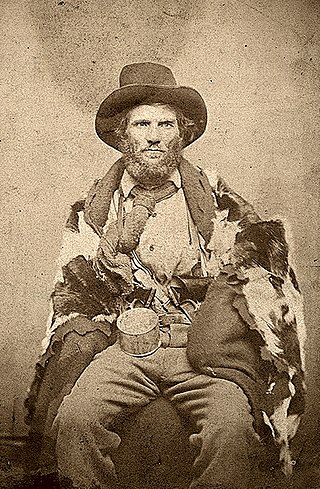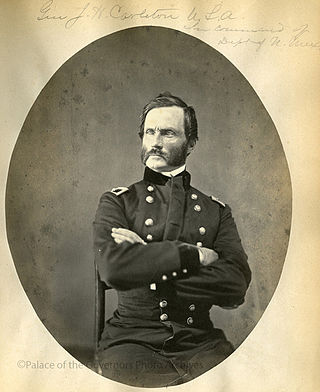Related Research Articles

Christopher Houston Carson was an American frontiersman. He was a fur trapper, wilderness guide, Indian agent, and U.S. Army officer. He became a frontier legend in his own lifetime by biographies and news articles, and exaggerated versions of his exploits were the subject of dime novels. His understated nature belied confirmed reports of his fearlessness, combat skills, tenacity, and profound effect on the westward expansion of the United States. Although he was famous for much of his life, historians in later years have written that Kit Carson did not like, want, or even fully understand the fame that he experienced during his life.
Dell Hathaway Hymes was a linguist, sociolinguist, anthropologist, and folklorist who established disciplinary foundations for the comparative, ethnographic study of language use. His research focused upon the languages of the Pacific Northwest. He was one of the first to call the fourth subfield of anthropology "linguistic anthropology" instead of "anthropological linguistics". The terminological shift draws attention to the field's grounding in anthropology rather than in what, by that time, had already become an autonomous discipline (linguistics). In 1972 Hymes founded the journal Language in Society and served as its editor for 22 years.

Navajo or Navaho is a Southern Athabaskan language of the Na-Dené family, through which it is related to languages spoken across the western areas of North America. Navajo is spoken primarily in the Southwestern United States, especially on the Navajo Nation. It is one of the most widely spoken Native American languages and is the most widely spoken north of the Mexico–United States border, with almost 170,000 Americans speaking Navajo at home as of 2011.

The Zuni are Native American Pueblo peoples native to the Zuni River valley. The Zuni are a Federally recognized tribe and most live in the Pueblo of Zuni on the Zuni River, a tributary of the Little Colorado River, in western New Mexico, United States. The Pueblo of Zuni is 55 km (34 mi) south of Gallup, New Mexico. The Zuni tribe lived in multi level adobe houses. In addition to the reservation, the tribe owns trust lands in Catron County, New Mexico, and Apache County, Arizona. The Zuni call their homeland Halona Idiwan’a or Middle Place. The word Zuni is believed to derive from the Western Keres language (Acoma) word sɨ̂‧ni, or a cognate thereof.

Athabaskan is a large family of indigenous languages of North America, located in western North America in three areal language groups: Northern, Pacific Coast and Southern. Kari and Potter (2010:10) place the total territory of the 53 Athabaskan languages at 4,022,000 square kilometres (1,553,000 sq mi).

The Dene people are an indigenous group of First Nations who inhabit the northern boreal and Arctic regions of Canada. The Dene speak Northern Athabaskan languages. Dene is the common Athabaskan word for "people". The term "Dene" has two usages. More commonly, it is used narrowly to refer to the Athabaskan speakers of the Northwest Territories and Nunavut in Canada, especially including the Chipewyan (Denesuline), Tlicho (Dogrib), Yellowknives (T'atsaot'ine), Slavey, and Sahtu. However, it is sometimes also used to refer to all Northern Athabaskan speakers, who are spread in a wide range all across Alaska and northern Canada. The Southern Athabaskan speakers, however, also refer to themselves by similar words: Diné (Navajo) and Indé (Apache).

Ella Cara Deloria, also called Aŋpétu Wašté Wiŋ, was a Yankton Dakota (Sioux) educator, anthropologist, ethnographer, linguist, and novelist. She recorded Native American oral history and contributed to the study of Native American languages. According to Cotera (2008), Deloria was "a pre-eminent expert on Dakota/Lakota/Nakota cultural religious, and linguistic practices." In the 1940s, Deloria wrote a novel titled Waterlily, which was published in 1988, and republished in 2009.
Clyde Kluckhohn, was an American anthropologist and social theorist, best known for his long-term ethnographic work among the Navajo and his contributions to the development of theory of culture within American anthropology. During his lifetime, Kluckhohn was a member of the American Academy of Arts and Sciences (1944), the United States National Academy of Sciences (1952), and the American Philosophical Society (1952).
Sergei A. Kan is an American anthropologist known for his research with and writings on the Tlingit people of southeast Alaska, focusing on the potlatch and on the role of the Russian Orthodox Church in Tlingit communities.
Raymond David Fogelson was an American anthropologist known for his research on American Indians of the southeastern United States, especially the Cherokee. He is considered a founder of the subdiscipline of ethnohistory.
Michael Eugene Harkin is one of the leading anthropologists in the United States specializing in the ethnohistory of indigenous people of the western U.S. and Canada. He is currently professor and former chair of anthropology at the University of Wyoming, having previously taught at Emory University and Montana State University. In 2011 he was Fulbright Distinguished Chair in Cultural Studies at the Karl-Franzens University in Graz, Austria, and in 2007 he was a visiting professor at Shanghai University.

William D'Arcy McNickle was a writer, Native American activist, college professor and administrator, and anthropologist. Of Irish and Cree-Métis descent, he later enrolled in the Salish Kootenai nation, as his mother had come to Montana with the Métis as a refugee. He is known also for his novel The Surrounded.

William Frederick Milton Arny was an Indian agent for the United States, who served as Secretary of New Mexico Territory in 1862–1867.

Museum anthropology is a domain of scholarship and professional practice in the discipline of anthropology.

The Navajo Times – known during the early 1980s as Navajo Times Today – is a newspaper created by the Navajo Tribal Council in 1959; in 1982 it was the first daily newspaper owned and published by a Native American Indian Nation. Now financially independent, it is published in English; its headquarters are located in Window Rock, Arizona.

James Henry Carleton was an officer in the US Army and a Union general during the American Civil War. Carleton is best known as an Indian fighter in the Southwestern United States.

Art of the American Southwest is the visual arts of the Southwestern United States. This region encompasses Arizona, New Mexico, and parts of California, Colorado, Nevada, Texas, and Utah. These arts include architecture, ceramics, drawing, filmmaking, painting, photography, sculpture, printmaking, and other media, ranging from the ancient past to the contemporary arts of the present day.
Roscoe Hall Wilmeth was an American archaeologist who was born in St. Marys, Pennsylvania. His research was focused on the protohistoric and historic period cultures in the Southwest and Great Plains regions of the United States, and the province of British Columbia in Canada. Wilmeth's major areas of expertise included Pueblo, Navajo, Kansa, Pawnee, Athabaskan and Chilcotin cultures. Wilmeth played a major role in the creation of the state archaeologist position in Kansas, was the first to occupy this position, and later went on to become a major contributor to Canadian archaeology as an archaeologist for the Canadian Museum of Civilization, formerly known as the National Museum of Man and which includes the Archaeological Survey of Canada.
Jennie R. Joe is an American academic, medical anthropologist, and fellow of the Society for Applied Anthropology. Initially trained as a nurse, she was one of the health clinic workers during Occupation of Alcatraz in 1969. She is a professor in the Departments of Family and Community Medicine and American Indian Studies at the University of Arizona. Joe was one of the inaugural board members for the Smithsonian's National Museum of the American Indian and serves on the board of the Urban Indian Health Commission.
References
- ↑ Reserve Memories: The Power of the Past in a Chilcotin Community books.google.co.uk. Retrieved January 2011
- ↑ David W. Dinwoodie University of New Mexico. Retrieved January 2011